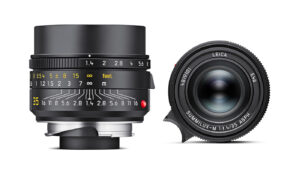As of 2023, Rolex employs the ‘Mercedes hands’ on illustrious models such as the Submariner, GMT Master, Yacht-Master and Yacht-Master II, Sea-Dweller, the latest Air King, and the Explorer, with the exception of the 2023 1908 Rolex, where the emblem’s circular center remains unadorned, reduced to a simple ring. In stark contrast, all other Rolex timepieces embrace the traditional stick hands.
So, what lies behind the Mercedes emblem embedded in Rolex’s timekeeping artistry?
Theory 1: The Three-Pointed Star
The Mercedes symbol, often referred to as the ‘Rising Star,’ features three distinct points, each symbolizing the modes of land, air, and sea transport. Considering Rolex’s dedication to crafting professional watches designed to conquer the challenges posed by these very environments (think Explorer, Air King, and Sea Dweller), one theory proposes that the three-pointed star is a nod to these pursuits. This theory, in its simplicity, resonates with Rolex’s ethos of clear and straightforward design choices.








Theory 2: The Luminescent Angle
The construction of a luminous Rolex hand shares similarities with a window, consisting of a metal frame enclosing an open space, filled with luminous paint instead of glass. The ‘Mercedes’ star, intriguingly, creates sections within the open space of the hour hand, rendering it more stable for the application of luminescent paint. While dividing this space into more sections could potentially stabilize the luminous material, it would diminish the quantity that can be applied. Hence, three sections strike a harmonious balance, ensuring ample support for the luminous material while maintaining legibility in low-light conditions. However, this theory faces a challenge from the Rolex Daytona, an immensely sought-after timepiece, which opts for conventional stick hands.

The absence of Mercedes hands on Rolex’s flagship model raises questions about this luminosity-based theory.
Theory 3: Honoring Mercedes Gleitze
A compelling theory connects Rolex’s Mercedes hour hand to British professional swimmer Mercedes Gleitze. In 1927, she undertook a legendary English Channel swim wearing a Rolex Oyster around her neck, which endured over 15 hours in freezing waters, remaining dry and operational throughout. Rolex capitalized on Gleitze’s feat, using it in an advertising campaign to underscore the Oyster case’s superior water-resistance, a marked contrast to vague claims by other watch manufacturers. Rolex still references Gleitze in its marketing materials, giving rise to the theory that the Mercedes-shaped hour hand in sport models pays subtle homage to this remarkable British swimmer. Nevertheless, skeptics question the connection, noting the vast distinction between Mercedes Gleitze and Mercedes-Benz, finding it improbable that Rolex would adopt an automotive emblem simply due to a shared “Mercedes” name.
Theory 4: A Homage to Hans Wilsdorf’s Heritage?
Delving even further into the realm of conjecture, some suggest that Rolex’s Mercedes-style hands may be an obscure tribute to Hans Wilsdorf’s German roots. Born in Kulmbach, Germany, Wilsdorf initially established Rolex’s headquarters in London, considering it his home. Only the imposition of a 33% tax in Britain led to Rolex relocating its headquarters to Geneva, Switzerland. Wilsdorf’s support for the Allies during World War II further distances him from any expression of German nationalism. Moreover, Rolex introduced Mercedes hands around the mid-1950s, a time when it seems implausible that Wilsdorf would incorporate a German tribute into his company’s watch dials.
In the end, the mystery surrounding Rolex’s decision to adorn its watches with Mercedes hands may remain unsolved. Perhaps Rolex, in its characteristic fashion, revels in keeping the world guessing. The true essence of this horological enigma may forever elude us. Share your thoughts on this enduring mystery.








































































